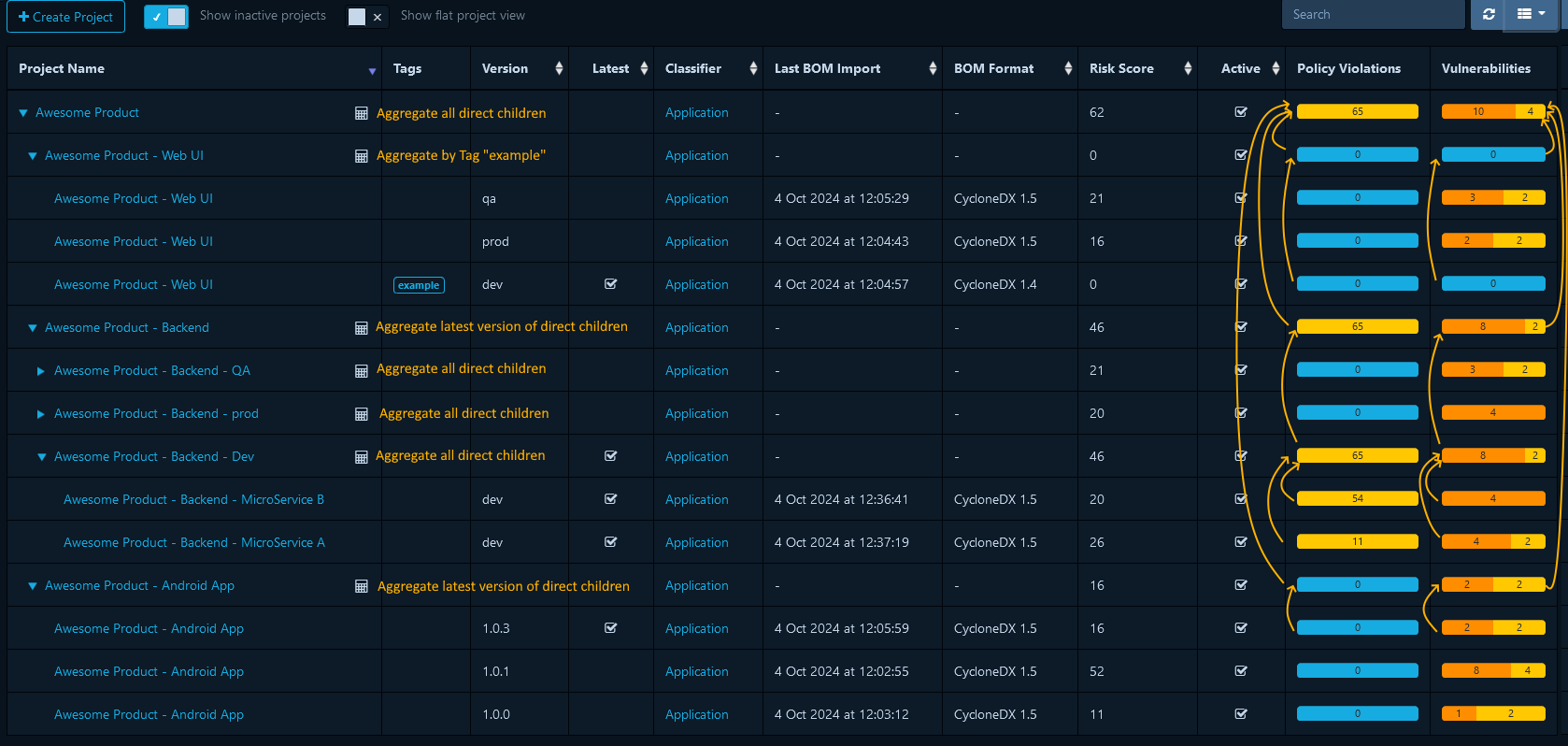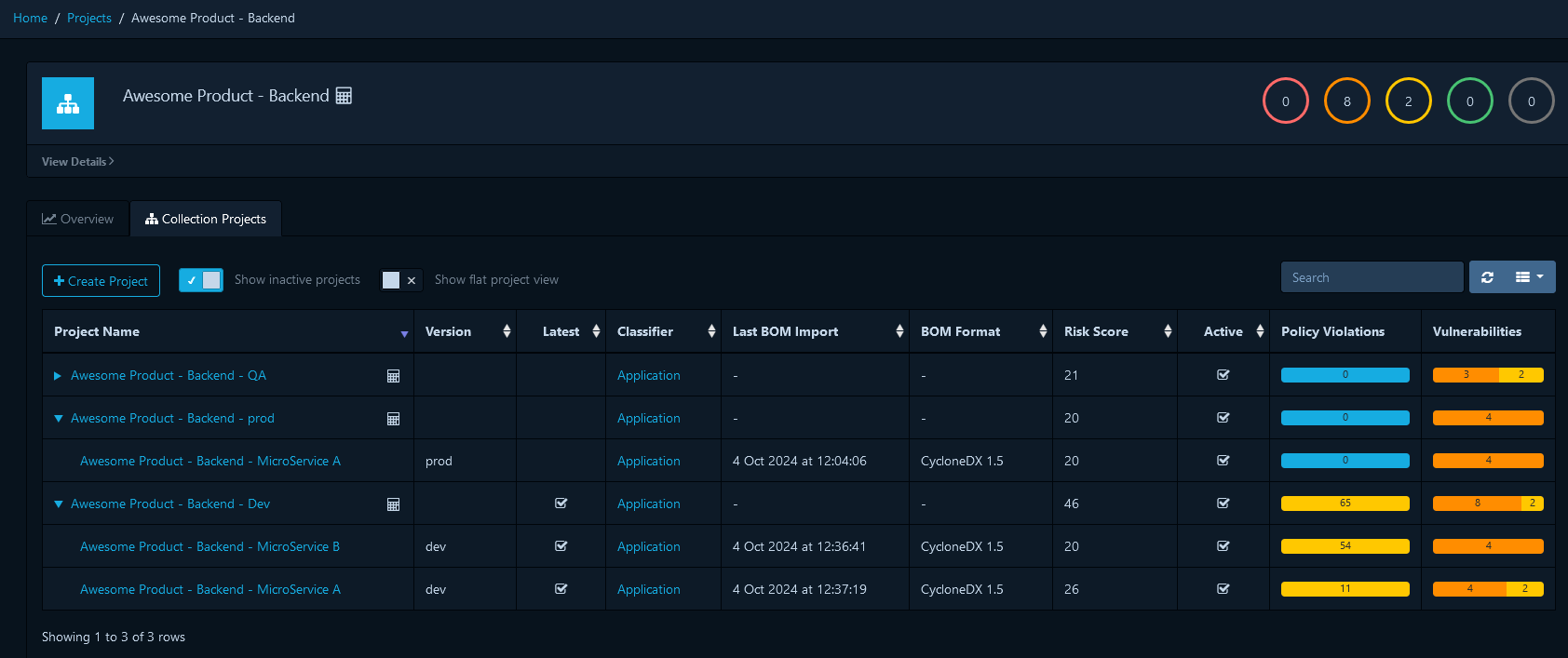Dependency-Track does support organizing projects in a tree structure via parent-child relationships. This can be used to organize projects for example by department or team, but also to structure a project itself into different sub-projects and to organize their versions.
Since v4.13 it also supports configuring parents as “Collection Projects”, which allows to define that a parent itself does not host any components, but instead aggregates metrics of vulnerabilities and policy violations of its children with one of three possible calculation methods:
- Aggregate all direct children
- Aggregate all direct children which have a tag of your choice
- Aggregate all direct children which are marked as latest version
This allows a wide range use cases to be displayed. See following screenshot which demonstrates a combination of all 3 possibilities within one product, which consists of a Web Frontend (tracking DEV, QA, PROD environment), a Backend with multiple MicroServices (tracked separated by DEV, QA, PROD environment), and a mobile app (tracking each released version of the app).

This is just one example how you could structure your projects and make use of collection projects to better visualize the projects state without going down into each single level. There are many other possibilities how you can organize the portfolio.
Collection projects do not show the usual tabs for components, vulnerabilities etc. Instead they show a list of projects contained in this collection and their metrics:

Collection projects can be easily identified via the “calculator” icon, and hovering it displays the applied collection logic.

 v4.13
v4.13